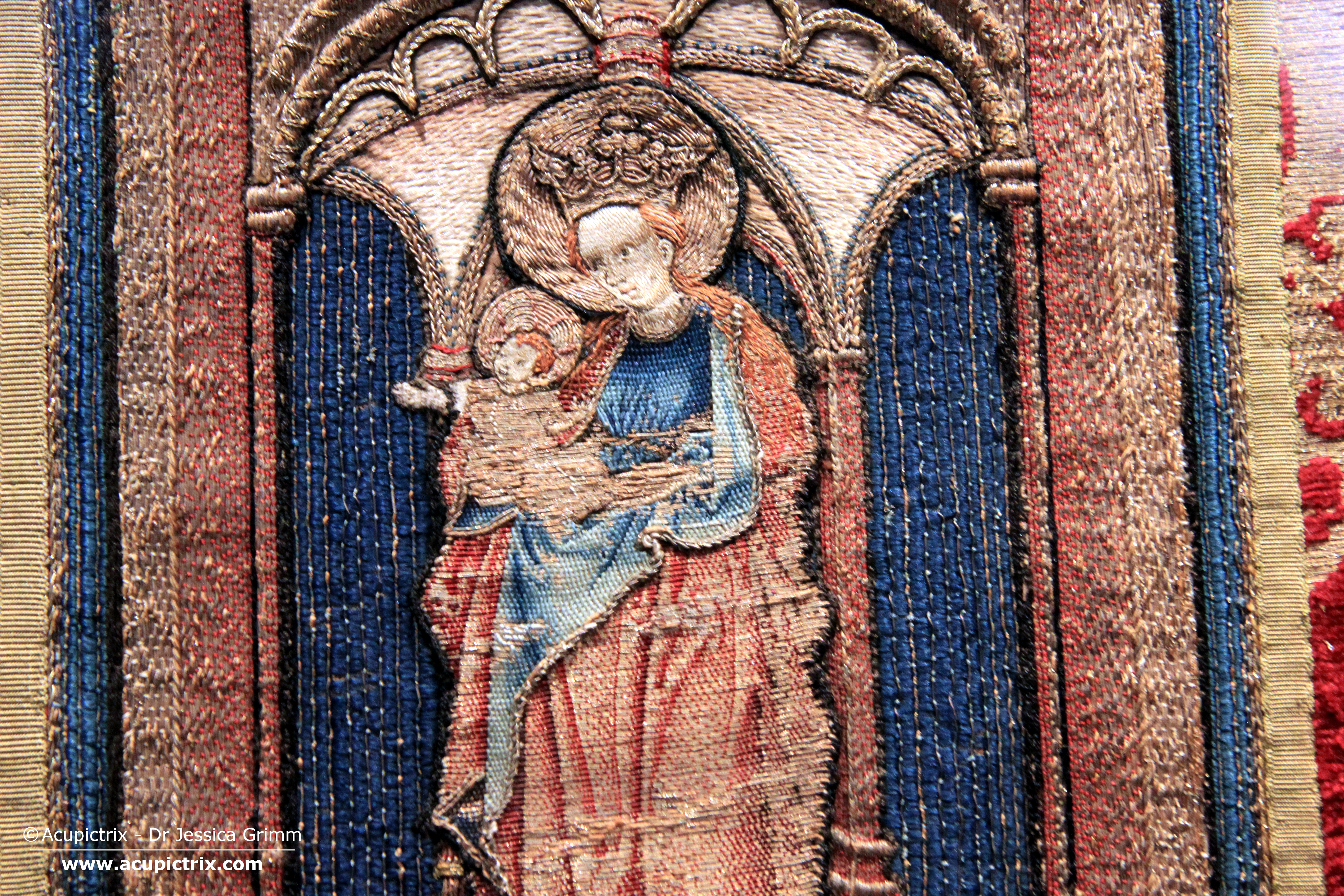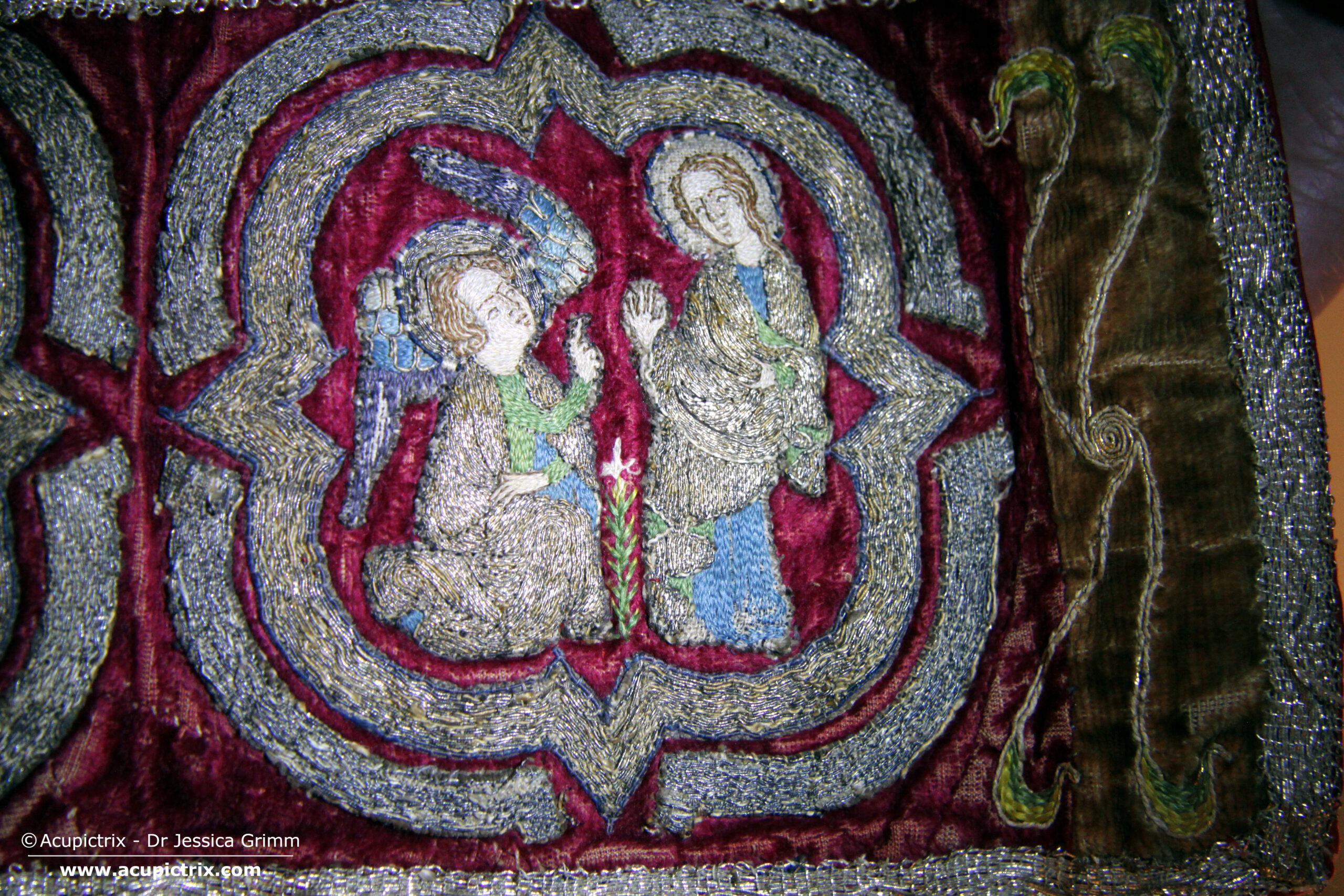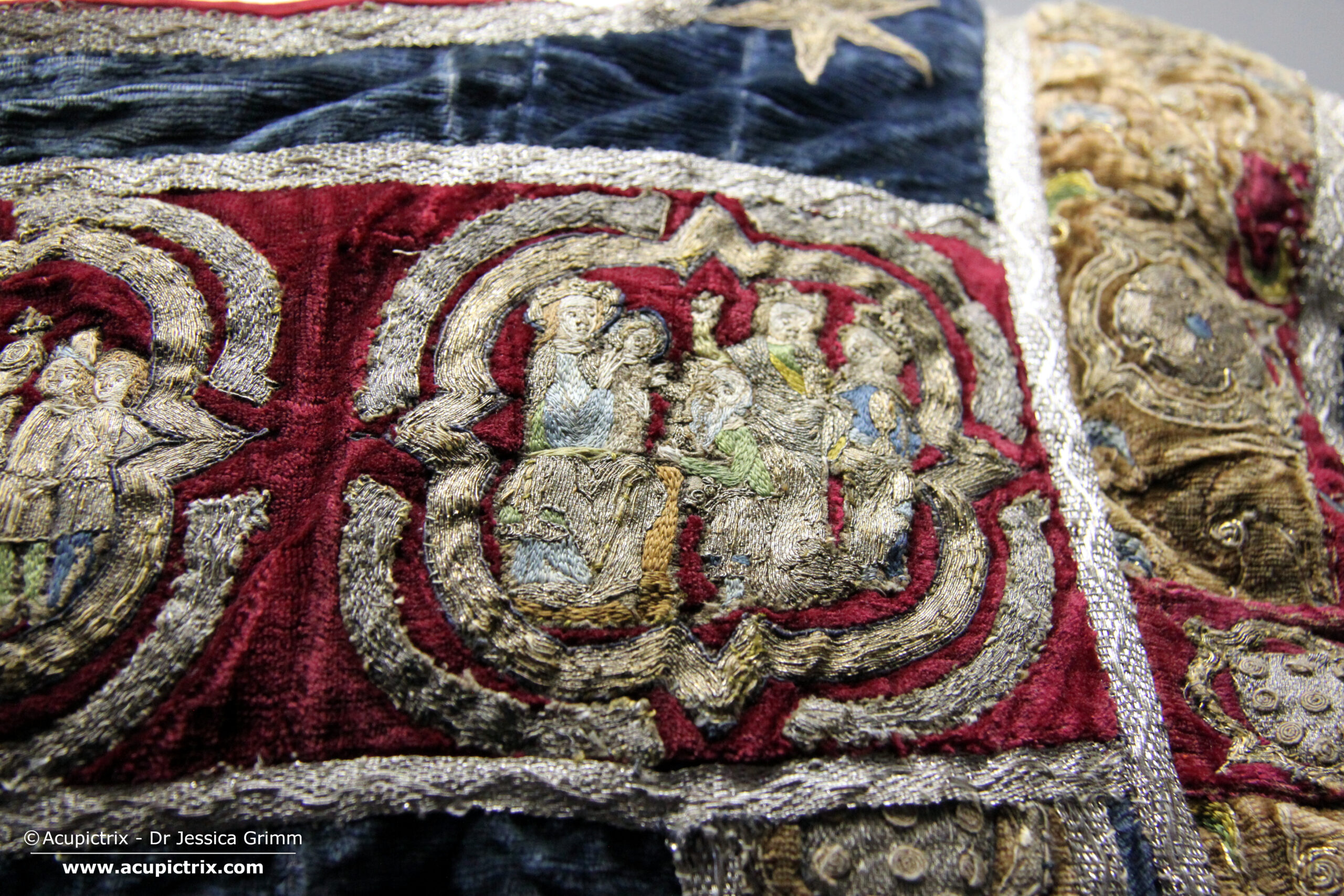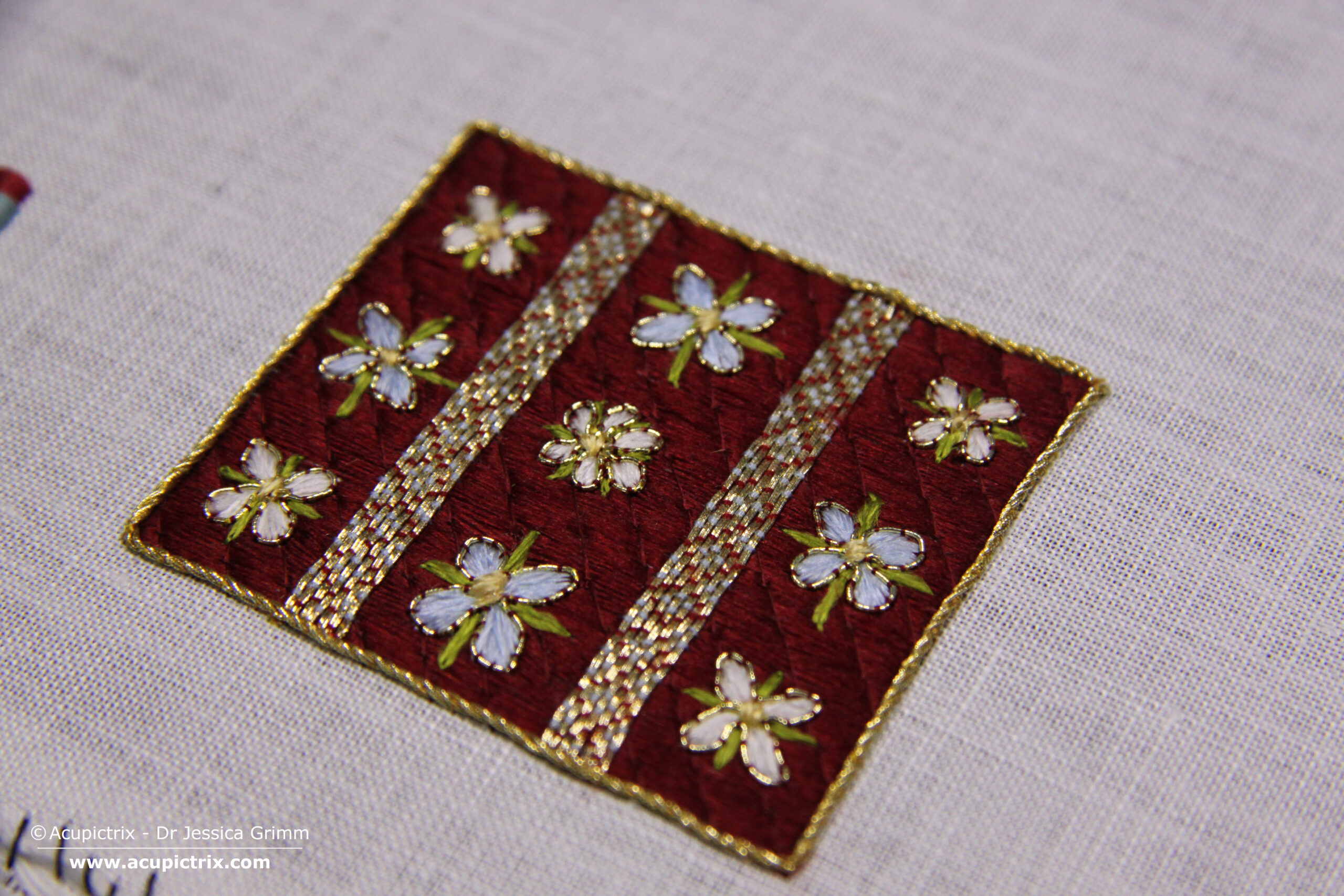Not sure how many of you studied last week’s pictures of the Schlosser set of vestments, focusing on the embroidery techniques used. If you did, you might have spotted the same oddities as I did. For starters, there’s the ‘enhancement’ of the faces with oil paint. Not an unusual practice. The skill needed to work these super-fine silken stitches to render the faces was something the restorers of these late-medieval embroideries could no longer do after about the 17th century. Another thing which you might have spotted was the cutting up of orphreys. Some were made narrower (the breast pieces of the dalmatics), and others were turned into real patchwork pieces to cover the ends of the dalmatics’ sleeves. But there is something else. And it reminded me of a 2021 French article on or nué that I had read a while ago.

Do you notice something odd about the embroidery techniques used for Mary’s clothing? The ‘red’ is clearly or nué. But what about the ‘blue’? Let’s zoom in a bit!

See?! The red is or nué. But the blue isn’t. It is shaded brick stitching over pairs of gold threads. You could call this Burden Stitch. However, this stitch is commonly executed over a single gold thread. Odd. Since all of Mary’s ‘blue bits’ are worked in this stitch, you are forgiven for thinking that this is original. Luckily, John the Baptist can help us out here.

And here is John the Baptist. His outer garment is almost entirely executed in beautifully shaded or nué. But look at his left shoulder. There’s a patch of this other stitch again. Executed in colours that come close to the original, but that are not the same. This ‘bastard’ Burden stitch is thus clearly not original. It was likely used to repair the original or nué in the mid-19th century. Probably executed by the Cologne vestment maker and his two daughters. Why did they not simply repair the area with actual or nué?
To me, or nué is a relatively simple embroidery technique. It has absolutely never intimidated me. Neither does silk shading nor shaded art blackwork. There’s a common theme here: I can shade. It does not matter to me whether I do the shading as part of blackwork, with long-and-short stitch, or over pairs of gold threads. Neither does it bother me that or nué and blackwork are counted thread techniques while silk shading is not. It is all just shading to me. However, being in the embroidery teaching business, I soon learned that there are roughly two types of embroiderers: those who can shade and those who can’t. Embroiderers who can shade a little do not seem to exist :).
Embroiderers who are, at first, intimidated by or nué often quickly get comfortable with the technique when they realise that it is just counted silk shading over a pair of gold threads. That is: embroiderers who can shade. Those who can’t shade cannot work or nué.
These modern observations make the embroidery on the chasuble of the Schlosser vestment set all the more intriguing. The ‘bastard’ Burden stitch on Mary is very well shaded. The embroiderer could shade! Why then did he or she not work true or nué? Was it a time issue? Or did he or she not recognise the or nué technique in the first place? The latter could really have been the case. According to a comprehensive 2021 study by Astrid Castres, the embroidery technique of or nué might have been completely lost for a couple of hundred years. It was then likely rediscovered in the second half of the 19th century, just slightly after the restoration of the Schlosser vestments. Fascinating!
Literature
Castres, A. (2021): Des premiers témoins médiévaux aux broderies des Clarisses de Mazamet : une petite histoire de l’or nué (XIVe-XXe siècle), Patrimoines du Sud 14, pp. 1–27.



0 Comments